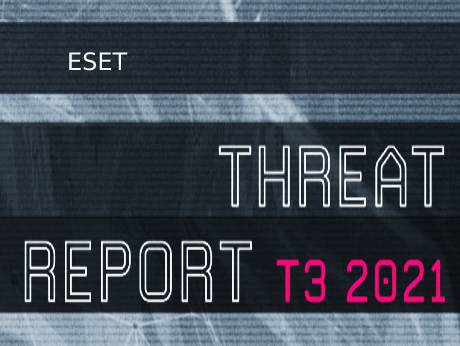
New Delhi, February 11, 2022: Leading IT security software and services company ESET, has released its T3 2021 Threat Report today, summarizing key statistics from ESET detection systems and highlighting notable examples of ESET cybersecurity research, including exclusive, previously unpublished updates on current threats. The latest issue of the ESET Threat Report (covering September to December 2021) sheds light on the most frequent external attack vectors, the reason behind the rise of email threats, and shifts in the prevalence of certain types of threats due to fluctuating exchange rates of cryptocurrencies. It reveals that India recorded the 6th highest Android detection globally, and the highest in the Asia Pacific region (APAC). It also recorded a 6.9% increase in 2021 as compared to 2020.
In the world of mobile, ESET noted an alarming upsurge in Android banking malware detections, which rose by 428% in 2021 compared to 2020, reaching the detection levels of adware – a common nuisance on the Android platform.
“The growing number of Android threats in India highlights an alarming trend, particularly as over 95% of the 600 million smartphone users in India are Android users. Additionally, about 75% of smartphone users in India did not install any mobile security solution, which meant that users could be susceptible to Android banking malware and other forms of mobile threats. To protect themselves against these threats, users should keep their Android devices updated and use reliable mobile security apps,” said Parvinder Walia, President of Asia Pacific and Japan at ESET.
The report highlighted that the most active botnet in T3 2021 was the Mozi, which in the last four months of 2021 amassed more than 162,000 unique IPs in India, 79,000 of which had already been compromised in the previous period. India had the second highest number of enslaved devices globally with 29% of the unique IPs detected in India. According to ESET telemetry, Mozi attempted to abuse known vulnerabilities on 5.2 million occasions globally in T3 2021, a 13% drop against the over 6 million attempts in T2 2021.
Researchers reveal that the ProxyLogon vulnerability was the second most frequent external attack vector in ESET’s 2021 statistics, right after password-guessing attacks. Microsoft Exchange servers fell under siege again in August 2021, with ProxyLogon’s “younger sibling”, named ProxyShell, which has been exploited worldwide by several threat groups. As the final threat report of the year 2021, it also comes with commentary on the broader trends observed throughout the year as well as predictions for 2022 by ESET malware researchers and detection specialists.
The research presented in the ESET Threat Report provides previously unpublished information about APT group operations. This time, researchers offer updates on the activity of cyberespionage group OilRig; latest information on in-the-wild ProxyShell exploitation; and new spearphishing campaigns by the infamous cyberespionage group the Dukes.
According to ESET telemetry, the end of the year was also turbulent for Remote Desktop Protocol (RDP) attacks, which escalated throughout all of 2020 and 2021. The numbers from the last weeks of T3 2021 broke all previous records, amounting to a staggering yearly growth of 897% in total attack attempts blocked – despite the fact that 2021 was no longer marked by the chaos of newly imposed lockdowns and hasty transitions to remote work.
Ransomware, previously described in the ESET Threat Report Q4 2020 as “more aggressive than ever” surpassed the worst expectations in 2021, with attacks against critical infrastructure, outrageous ransom demands and over USD 5 billion worth of bitcoin transactions tied to potential ransomware payments identified in the first half of 2021 alone. As the bitcoin exchange rate reached its highest point in November, ESET experts observed an influx of cryptocurrency-targeting threats, further boosted by the recent popularity of NFTs.
Email threats, the door to a myriad of attacks, saw their yearly detection numbers more than double. This trend was mainly driven by a rise in phishing emails, which more than compensated for the rapid decline in Emotet’s signature malicious macros in email attachments. Emotet, an infamous trojan inactive for most of the year, as illustrated in the report, came back from the dead in T3.
Full report here: ESET Threat Report T3 2021